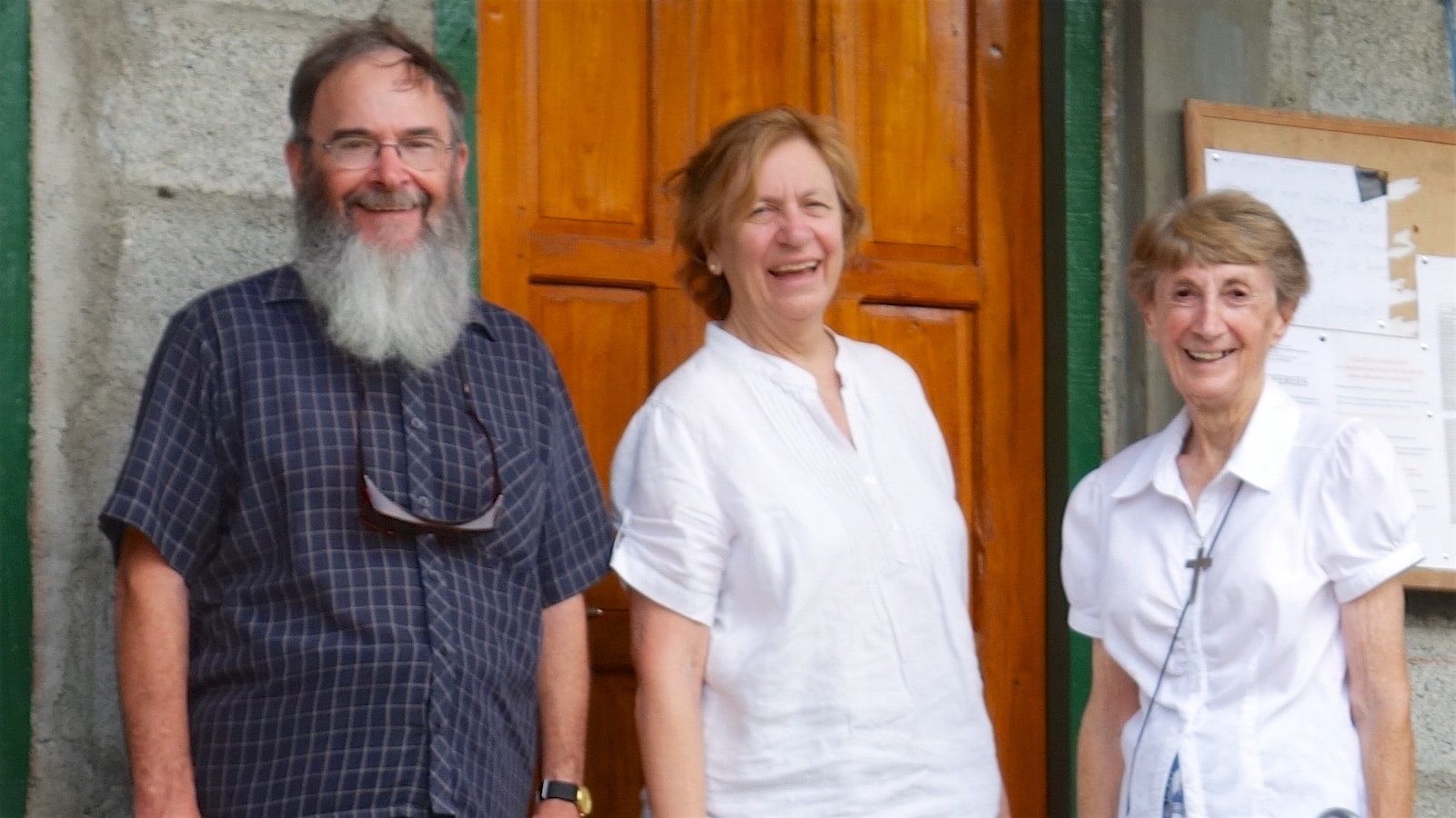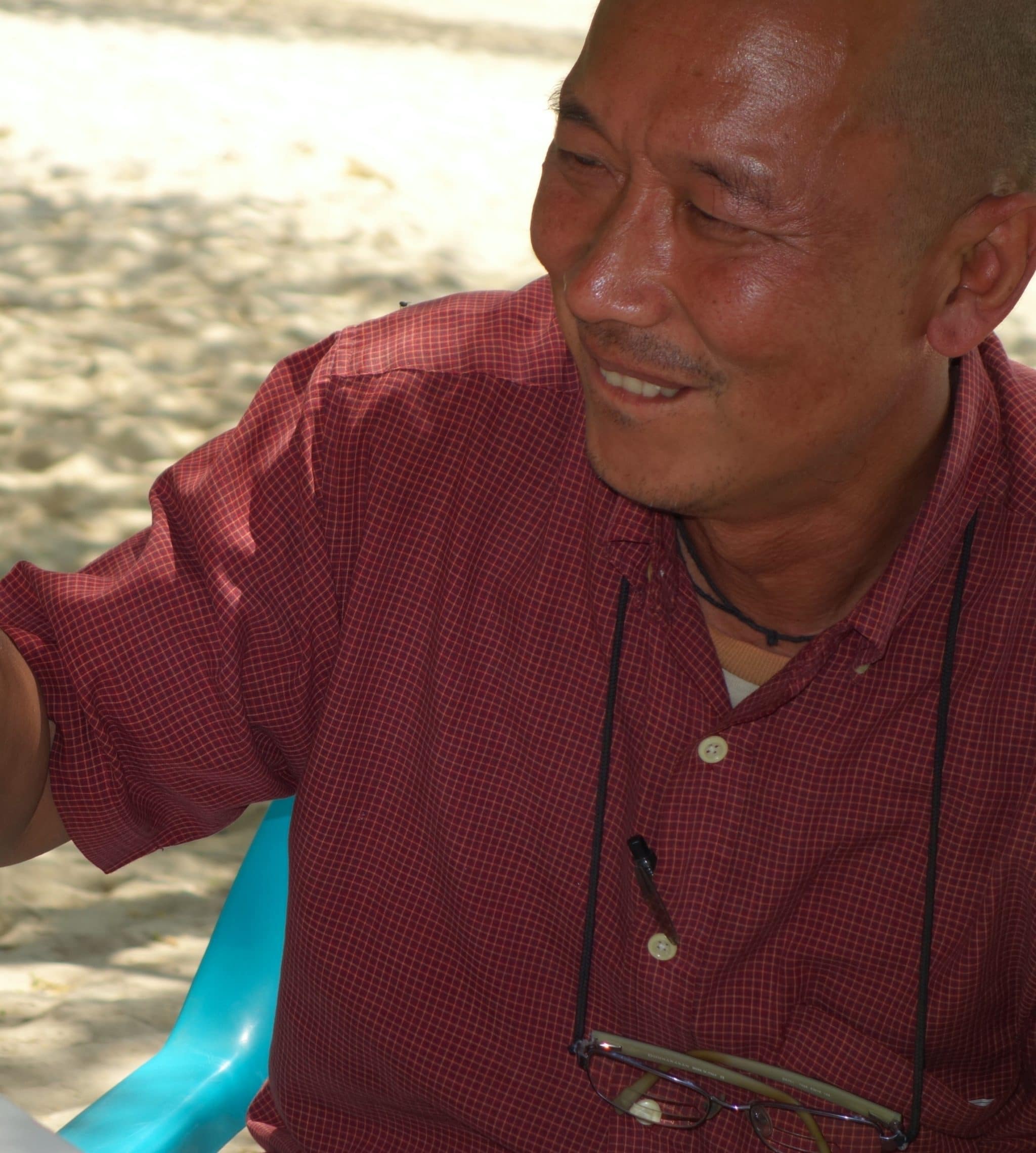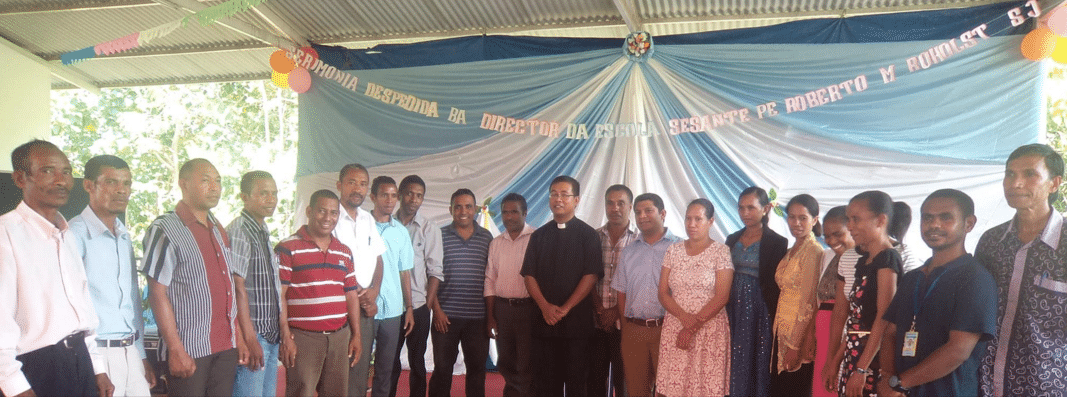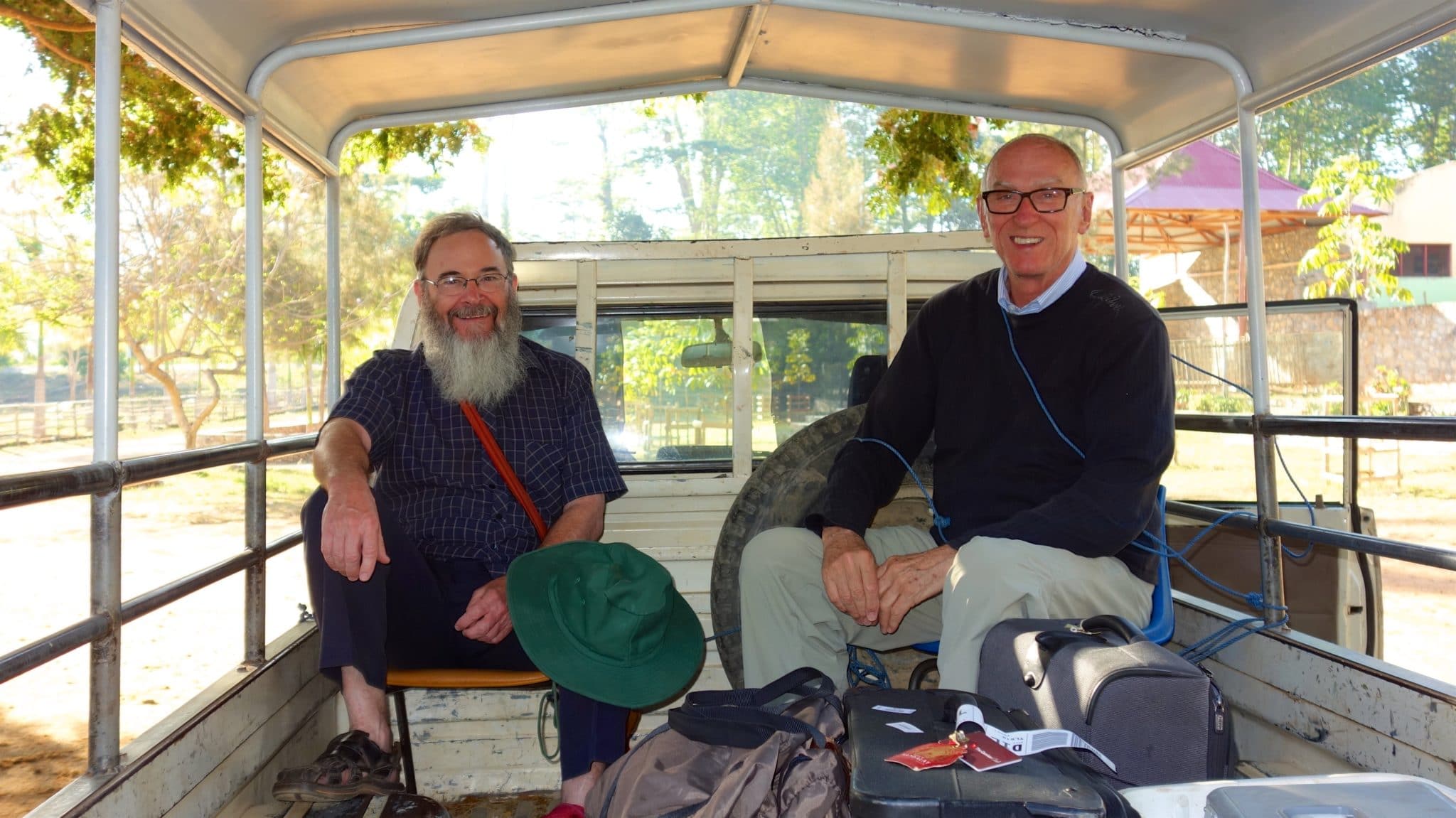Looking Back with Gratitude: Complicated Twists and Surprising Turns in Railaco Mission
Roberto Boholst SJ Friday April 15, 2016
I was all set to bring my last box to Railaco when we received the letter of the Bishop who decided to entrust the management of the school to the lay teachers. I was very upset because for some nights I already planned my strategy. Most of my personal belongings were all in Railaco already, so the thought of bringing them all back to Dili was very distressful. Those in Railaco were angry, and to some extent I shared the bad feeling of being unwanted and rejected by the people we simply wanted to serve. Actually at that time, I was relatively open and available to move to Railaco because of the opportunities for pastoral works. Right after ordination, I was immediately thrown into office and house works, so I had less chances of working directly with people in terms of sacramental and pastoral care. Back then, I was unsure on how to fit myself into our big education works in Kasait, so the shift to Railaco was a welcomed move. However, my excitement and eagerness to begin a new assignment was crashed by that one-page letter.
With the Railaco community’s appeal to the Bishop to let the Jesuits run the school, the Railaco Mission team was still hoping for the Bishop’s change of heart, while I already shifted and focused my full attention to my new work as finance officer at Kasait. I was eyeing on either the academic or formation programs because of my Basic Education training and background, but finance and administration department was the one in need, so I had to learn many new things, accounting in particular. In college, I refused the offer to take Accountancy as a first degree because I did not like to handle money. I knew that money can be a potential source of all kinds of troubles, but eventually in the mission, we need to figure out how money works and put it at the service of the Divine Majesty. Amidst the troubles of beginnings, I found my way, and I was enjoying the chance to help shape the principles, programs and directions of our new school. In my eagerness and forcefulness, I asked too many questions, because I wanted to make sure that we were doing the right thing, and that we would be hitting our target. I was already mouthing sustainability during our first months, so I pushed for decisions that would slowly answer our concern for survival. To divert me from the horror of too much future thinking, I busied myself teaching English and Religion to our eager students. Slowly, I enjoyed my days at Kasait, and I was all set to work fully for our dream school.
Every now and then, I would hear conversations about the imminent return of the Jesuits to the school in Railaco. I dismissed those whispers as hopeless efforts. The leadership was very positive about our take-over, so that even before the new letter from the Bishop, I was already told to move to Railaco. I was unconvinced and very unhappy. In my desperate attempt to persuade the Superior not to send me to Railaco, I asked two seemingly important yet silly questions: “Will there be money for the school? Will there be a car accessible to me?” Without hesitation our Superior responded on the affirmative, so out of obedience, I moved to Railaco with doubts on our financial viability. I tried to learn driving, but eventually stopped, and found myself laughing for asking a car but not driving.
Nobody knew how the new Jesuit Education team should claim our legal place at the Railaco School. Though we had a good meeting as a new Railaco Mission team, there was no clear plan for our integration into the apostolic works, so I crafted a document outlining our possible lines of coordination. I drew an initial plan on the return of the Jesuits to the school with the intention of clarifying our roles and of listening to the voices of the lay teachers. After 10 days of sitting down at the residence, I could not wait anymore, I went to the school armed with a personal letter of introduction and attached was my detailed plan on the Jesuits’ return to help the school. The School Coordinator was polite, and he only asked for one thing, to let them finish the School Year. Of course, I agreed immediately, because actually at that moment, in the teachers’ eyes I did not have any authority yet because there was no formal appointment whatsoever. I found out later upon studying their records that they are very particular on formal and legal documents.
Entering into the school after all the troubles and hot exchange of accusations was a very awkward situation. Luckily, I had two East Timorese Jesuit regents with me, Rui Muakandala and JP Lobo Mascarenhas. They assisted me very well, and they gave me inputs on local dynamics and sacred traditions that helped me well to understand the context and tendencies of the people. It was like forcing ourselves to the teachers who tried their best to keep the school going amidst all the limiting circumstances. Some teachers were so cold, others greeted us civilly, but as a whole they accorded respect due to my clerical status. Slowly, I had to tell them that we have come to help, not to destroy, to build on whatever they have started, and work together to make the school a better Catholic institution. The students were seemingly not so eager of our arrival, perhaps they were still suspicious of our presence. So the indefatigable Sister Rita tried all her best to give us a simple formal welcome ceremony. In our table conversations and formal meetings, she gave us many inputs and tips on how to navigate at school. She made sure that we had all the things we needed for a more productive work. She was in a hurry for the so called take-over of the management of the school, but it took three months of squabbling before my formal appointment could be secured. True to my words, I allowed the teachers to run the school until the end of December. I spent the five months for closer observation, initial planning and creative strategizing on what and which approach to utilize. I listened to the stories of the teachers and the Railaco Mission team, studied their records and files, and dissected the issues behind the quarrels. Communication was the main problem. Transparency was the battle cry. Confidence and trust to one another was damaged. I had to be the ambassador of good will.
Due to the change in the start of the School Year to January, we had a very long year-end break. It gave me more time to dream big and plan strategically. It allowed me to wash all the curtains, organize the files, study the history, prepare the budget, craft policies and prepare for my lessons. Sometimes in my boredom, I would dwell in self-pity for running a small school in the mountains. It was like wasting the precious time and abundant energies of a newly ordained minister who could be up and going with people instead of looking at an empty school. I remembered that one of the many reasons why I pushed myself to try the Jesuit novitiate was the dream of running a real Jesuit school in order to multiply the Ignatian ideals. And then, at the prime of my ministry as a newly ordained Jesuit priest, I ended up in a disputed parochial school, unsure of the school community’s acceptance, unclear with how I could insert Ignatian Spirituality. So I tried to tell myself to be open and available to stay in the peripheries, to be in the margins, to be where people are, and bring them into our agenda of working for the greater glory of God.
With only around a month of gazing each day of life at Railaco, the school community became close to my heart, especially because of the students who needed to walk long distance every day. They came to school without breakfast, and then walked back home to have their lunch. Their parents were not very supportive of their schooling. Many students were eager to learn but the opportunities were very limited. The students were in the classroom, but the teacher was either late or absent. Some teachers entered the class unprepared, brought a book, wrote some lines on the board, or simply copied the pages of the book. Some of these scenarios are very close to my own past, so I became more driven to make a difference.
With a heart renewed and burning with enthusiasm, I started on trying to find ways to win the loyalty of the teachers. My three solid years of experience as a classroom teacher before joining the Jesuits worked to my advantage. I know the plight of the poorly paid teachers who are overworked. The salary of a simple teacher will never be enough with the cost of living that is always rising. I studied our budget, and I found some ways to make the teachers a little bit happy, valued and appreciated. However, I had to explain clearly to them in numerical figures the poverty of the school and on how we have been relying from the generosity of donors and benefactors. I motivated them to do well so that people will believe in our works and will join in our efforts to form the young to become future leaders. The teachers know what they want, but they have been looking for a system, they have been waiting for a leader to journey with them, and they have been wanting real and meaningful conversations.
We had series of meetings and individual consultations where policies were crafted, guidelines were discussed, budget was explained, financial report was opened for scrutiny, projections to the future was presented, principles were emphasized, participation was encouraged, and they started to own the whole process. At the start, they kept on referring to the past, but I would always challenge them to try something new and see the difference. I assured them that I was not forcing any Jesuit tradition, and that I was simply implementing the directives from the country’s Ministry of Education.
The visit of the St. Canice team in October 2013 led by Fr. Chris Jenkins, S.J., the parish priest, was very crucial in building my confidence to dream big for NOSSEF. They have been helping the school for more than 10 years. In my conversations with them, they knew and understood my worries and concerns, and they assured me of their continuing support. The original commitment of five years has been doubled already. Funds are dwindling, but they told me not to lose hope. So I believed. At the end of 2014, I gave them a rosy report with a big surplus that allowed us to open our official school bank account with the local bank to begin some funds for repairs and emergency needs. The St. Canice monthly subsidy has allowed me to push for my agenda and at the same time make the teachers happy. Slowly, I have been telling the teachers to be ready for the days without subsidy, all the more when the Jesuits are gone. I told them to do well, attract more students, raise the tuition, convince the Government teachers to stay, and then NOSSEF will continue to form young people who are ready to serve God and country.

In 2014, we were so focused on systems and procedures. I tried to attend most of the meetings at the Ministry of Education in order to understand the East Timor Educational system. I established stronger connections with people in authority so that updates would be quick and collaborative works can be possible. We tried to be punctual in submitting reports, shared school updates to the authorities, wrote many letters of requisition and letters of gratitude for grants given to us. In December 2014, the Education Director of Ermera District authorized us to sign our diploma and other official documents. I was busy in the local front, while Sister Rita was continuing her campaign abroad to bring more monies for NOSSEF. Slowly, I was studying her strategy and I tried to learn her business of begging. Every now and then, I would ask her ideas, drawn from her many years of running big Good Samaritan schools in Australia. I was very diligent in observing her ways of welcoming people and of presenting her projects.
I was not involved in any major construction works before, so I was a mere listener when Sister Rita and Miss Lucy Yoong were so eager in discussing the details of our canteen. I was so concerned with the money involved, which I thought could be better spent for a Learning Resource Center. My priority was the library and the laboratories, but Sister Rita reminded me of the donors’ intention. At one point, I told Sister Rita that should the canteen fail, I will immediately make the kitchen as the science laboratory. Against all odds, Sister Rita was very determined to begin the canteen operation. Rotary helped her to bring in kitchen utensils, tables, chairs and even tissue papers from Australia. Loyola College Watsonia donated monies for the staff’s salary. After a short tour around the new canteen and with a brief explanation from Sister Rita, Sansan Hakim was convinced to donate monies for the canteen operation. Even with a poorer health condition, Lucy Yoong returned to fulfill a promise of training the staff. We were very saddened with her sudden demise. Lucy gave her all until it was time to return home. Before she returned to Australia for a new assignment from the Sisters of the Good Samaritan congregation, Sister Rita made sure that the canteen’s future is secured. Thank God, Jesuit Scholastic Michael Phung took over the management of the canteen, on top his many classes and other duties.
One day in an email, Bro. Noel Oliver, S.J. asked me to identify a need for the school in Railaco. I had many in mind, but I had to pick a priority. I presented our need for a secured library. Bro. Noel introduced me to his German friends who did not only help me refurbished a vacant room to become a learning resource center, but also assisted me in buying cabinets and chairs for the faculty and administration rooms, grass cutter, projectors, and many other learning resource materials. The remaining cash we used to construct a temporary dormitory for boys, a very simple structure, just enough for the boys to have a space to stay. Aside from the real need of a house, we also wanted to augment the security of the school.
In August 2015, Fr. Franz Pitzal and Fr. Klaus Schreiter visited us in Railaco. Happy with how we utilized his donation, Fr. Pitzal gave us more, so we were able to construct another house for the boys, better and stronger. Fr. Schreiter has also helped us to secure monies for the renovation of our first school building, acquisition of a photocopying machine and construction of a water tank for the canteen. We are waiting for the finalization of the donation. Fr. Pitzal is interested in contributing to the construction of our dream two story building, which at the moment, we have not fully discussed in detail. God has been very generous to us by sending angels who whisper good news that has continuously fortified our yeses.
Another major donor for us is Mater Christi College in Melbourne. They are very keen in helping girls complete their education. They facilitated the intensive English learning program for two of our girls who went to Australia and stayed for around three months. Their teachers have been contributing for the salary of our gardener, for the construction of the canteen and the motorbike parking space, for the professional development of our teachers, and more recently for the construction of our 3-classroom temporary school building. They have a team who continuously discuss and discern on how they can continue on helping NOSSEF, especially in programs that will benefit more girls who are usually less privileged in a male dominated society.
In 2015, we were lucky to be a recipient of the donation from students of St. Joseph’s College Geelong who organized a concert to raise funds. The monies they sent were allocated for scholarships, minor repairs and information technology needs. St. Joseph’s has helped us do the finishing touches of our floors, replaced our doors, repainted the markers of our basketball and volleyball courts, and allowed us to make a metal goal posts for futsal. St. Joseph’s has increased the number of our scholars. With funds available, we were able to do repairs to some of our laptops. Simon Cahir’s request for a detailed plan on how the monies would be spent pushed me to study our needs more carefully. His eagerness and persistence in making sure that their donation reached us buoyed my spirit to do our works even better.
One after the other, I got to know the people behind the donations flowing to NOSSEF. I was amazed by the generosity of a non-Catholic Joe Roach who helps in educating 30 kids and added extra for the purchase of dictionaries to be awarded to the top performing students.
I was energized by the dedication and enthusiasm of Fr. Pat Smythe whose Peter Trust Fund has been helping 20 students every year finish their senior high school education. The visit of Fr. Pat and my personal conversations with him gave more confidence and assurance that many generous people are behind our desire to help the rural people improve the quality of their lives.
I was moved by the gentleness and all out support of Mr. Paul Reed of CRC Sydenham who has been helping 20 students. The CRC parents also donated monies for the acquisition of more learning resource materials. I admire the persistence of the Friends of Ermera to support 10 young girls every year.
Sister Rita continues to help the kids from the five villages with her Congregation’s scholarship funds. She also brought in Helen Taet, Phil Yacuno, and many others whose little contributions mean so much for us in the mountains. Recently, Mr. Kevin Slattery and his friends have joined our list of generous people. Kevin sells plants and other goodies in order to raise funds for his scholars. One Facebook friend responded to my appeal for support to a fatherless student who needed to work in the garden to keep him at school. There were many others who also expressed interest to help and contribute to our projects. All these have been a great blessing for me and for the NOSSEF community.
At the onset, I felt helpless because of our limited access to financial resources, only to be surprised with the many small yet significant contributions from people we barely know. I am very grateful to Sister Rita Hayes, SGS whose hard work and dedication prepared the way for me. In many ways, I only harvested the fruits of her labors. We have done so much in a very short time because of the above mentioned kind-hearted people.
One of my personal agenda upon taking over the management of NOSSEF was to make the school more stable and officially independent. Fr. Mark Raper expressed his wish to make the school a good parochial school that can become an example to others. We needed almost three years before we could confidently submit the requirements that will merit the nod of the Education authorities. We have been running the school on our own, integrating some Jesuit ideals, deepening the Catholic identity, and improving the quality of our instruction; however, we needed to settle down a bit, before asking for our independence. Now we are waiting for the official response from the Ministry of Education.
Everybody agrees that in building an institution, we need some sense of continuity and follow-up. We can have all the beautiful dreams and neatly crafted development plans, but we need people who are willing to dirty their hands and break their heads to execute our plan. It would have been good to stay a bit longer to sustain our efforts; however, the bigger apostolic need of our Region requires movement of our personnel. I am just happy because the teachers are now more appreciative of the Jesuit influence on the way we run the school. There are still many things undone, but the important thing is that the teachers who are crucial factor in running a good school are already on our side. I am also happier because more and more students are coming to enroll: 74 in 2014, 67 in 2015, and 116 in 2016.
For the past three years, my constant refrain to the students and teachers, “Cooperate with me. My time is short. I am leaving anytime. I have come to help.” For now, I can happily say, “Thank you very much!”
We at St Canice’s wish Fr Bert every success in his new responsibilities as Education Delegate for East Timor Jesuits and for the St Ignatius School in Kasait; and welcome our long-time friend Fr Bong who now assumes additional responsibilities for fostering the Ignatian nature of the Railaco Secondary School, in addition to his works with the Mobile Medical Clinic and the Children’s Feeding Programme.



